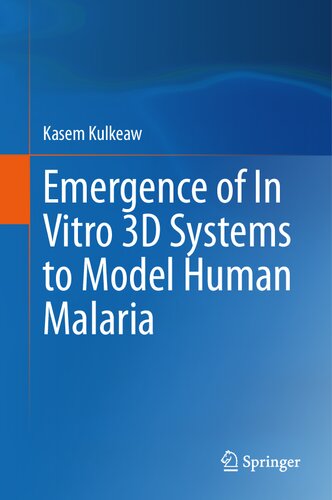

Most ebook files are in PDF format, so you can easily read them using various software such as Foxit Reader or directly on the Google Chrome browser.
Some ebook files are released by publishers in other formats such as .awz, .mobi, .epub, .fb2, etc. You may need to install specific software to read these formats on mobile/PC, such as Calibre.
Please read the tutorial at this link: https://ebookbell.com/faq
We offer FREE conversion to the popular formats you request; however, this may take some time. Therefore, right after payment, please email us, and we will try to provide the service as quickly as possible.
For some exceptional file formats or broken links (if any), please refrain from opening any disputes. Instead, email us first, and we will try to assist within a maximum of 6 hours.
EbookBell Team

4.4
72 reviewsThis book illustrates the importance and advances of the disease model for malaria, a globally affected public health problem. This book provides comprehensive information on the malaria biology in a liver and all in vitro platforms for liver-stage malaria, including principles, protocols, applications for disease modeling and drug screening, and their limitations. The initial chapter describes the basis of stem cells in liver generation during development and in adults. The subsequent chapters highlight recent and emerging advances in liver organoid and liver-on-a-chip in modeling malaria. The book presents current protocols and methods to generate liver organoid and liver-on-a-chip together with their advantages and limitations. Toward the end, the book examines the humanized mouse model of liver-stage malaria using ectopic artificial livers regarding novel readout modalities. The recent advancement and challenges in combining liver-on-a-chip technology with biosensors are highlighted for assessing hepatocyte development viability and functions. The book elucidates the potential of these 3D models to understand the biological complexity of cellular and molecular mechanisms involved in Plasmodium development in the liver, toolboxes to investigate parasite deployment in the 3D models, and to implement in drug discovery. Finally, the book discusses the future directions and challenges in the applications of liver organoids and liver on-chip in the biology of live-stage malaria. This book is helpful for researchers and scientists in the field of parasitology, cell biology, tissue engineering, and pharmacology.